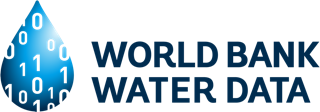In response to the preventable threats posed by poor sanitation and hygiene, in December 2006 the Water and Sanitation Program (WSP) launched two related large-scale projects, Global Scaling Up Handwashing1 and Global Scaling Up Rural Sanitation. Th ese hygiene and sanitation interventions are designed to improve the health and welfare outcomes for millions of poor people. Local and national governments are implementing these projects with technical support from WSP. The goal of Global Scaling Up Rural Sanitation is to reduce the risk of diarrhea and therefore increase household productivity by stimulating demand for sanitation in the lives of people in India, Indonesia, and Tanzania. Th e project approach demands involvement from communities, local government, and the private sector. It aims to trigger the desire for an open-defecation free community by raising collective awareness of the open defecation problem. Facilitators are sent to communities to initiate participatory analysis of the communities’ existing sanitation practices, and the consequences and implications of such practices for themselves. Th is process is designed to catalyze collective community desire and action to become open defecation free (ODF). Th e community must forge their own plan for making this happen with only limited follow-up support and monitoring from the program. Communities claiming to have become ODF are verifi ed by local government agencies. ODF achievement by a community brings recognition and commendation from local and provincial governments. Th e project also seeks to stimulate the supply of appropriate sanitation products and services by conducting market research and training local artisans to build the relevant facilities. To measure the magnitudes of the impacts, the project is implementing randomized-controlled trial impact evaluations (IE) study in order to establish causal linkages between the intervention (treatment) and the outcomes of interest. Th e IE uses household surveys to measure the levels of key outcomes. The overall objective of the project is to improve the health of populations at risk of diarrhea, especially in children under the age of five years, through highlighting the negative health consequences of poor sanitation. Th e impact evaluation provides a unique opportunity to learn what health and welfare impacts can be expected from sanitation improvements. If, as expected, the evaluation finds strong health and child development impacts of improved sanitation, the study will be an important promotional tool for expanding the program across the nation. But to generate the support needed for a national program, the evidence must be clear and compelling. It is therefore important that the impact evaluation use widely accepted impact evaluation protocols and that it disrupts the planned program as little as possible. The impact evaluation assesses the effects of the project on individual-level sanitation behaviors, community-level collective behaviors, and the program’s impact on the health and welfare of young children (under fi ve years of age). It examines the impact on a broad range of health indicators and intensively studies the developmental, social, and economic welfare impacts of these interventions. Health outcomes that are explicitly planned in the study include: • Diarrhea prevalence; • Stunting and wasting; • Iron defi ciency anemia (through minimally invasive fi nger-prick tests); • Parasitic infestations (from fecal samples); and • Cognitive and motor development. Some of the non-health indicators are: • School attendance, academic performance, and future earnings; • Productivity of mother’s time for household, market, and social activities; and • Female empowerment and security due to safer sanitation conditions. (The above excerpt is taken from: Scaling Up Rural Sanitation: Findings from the Impact Evaluation Baseline Survey in Indonesia by Lisa Cameron and Manisha Shah November 2010) The report is attached.


